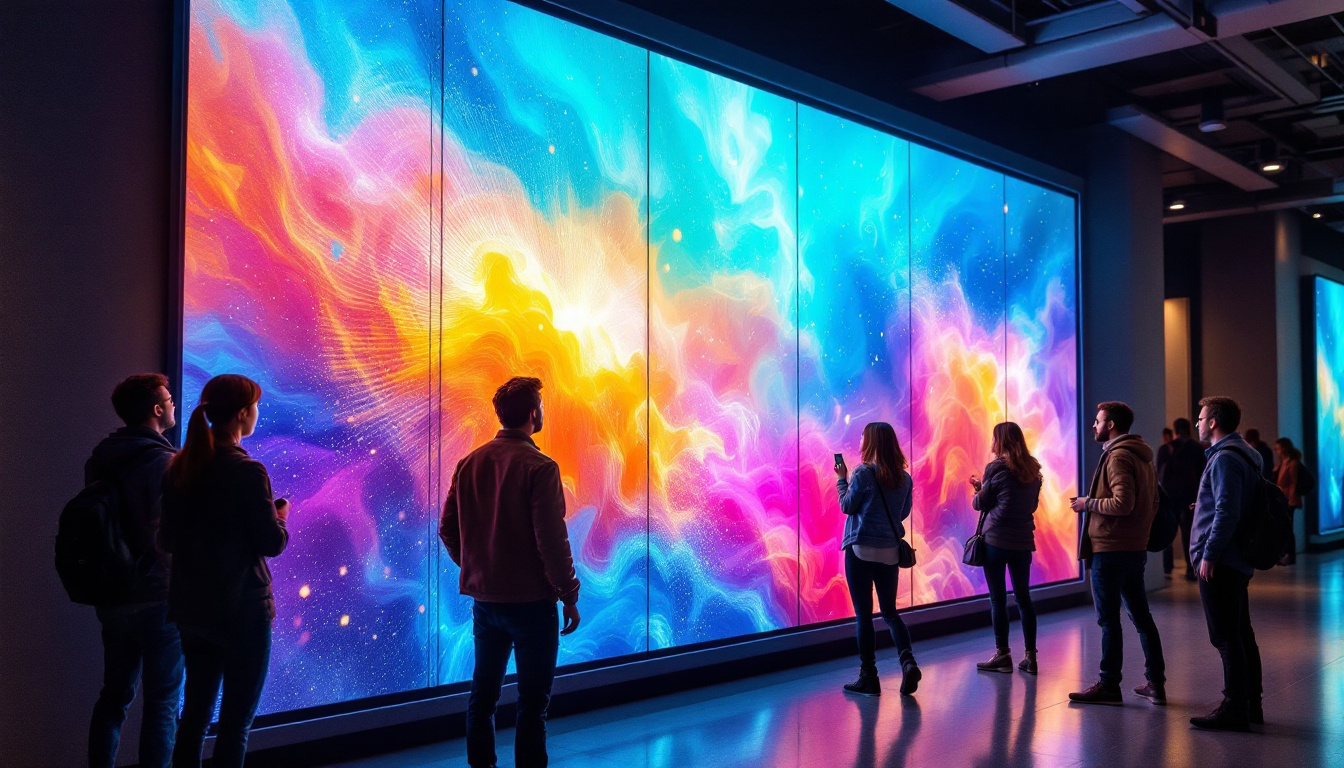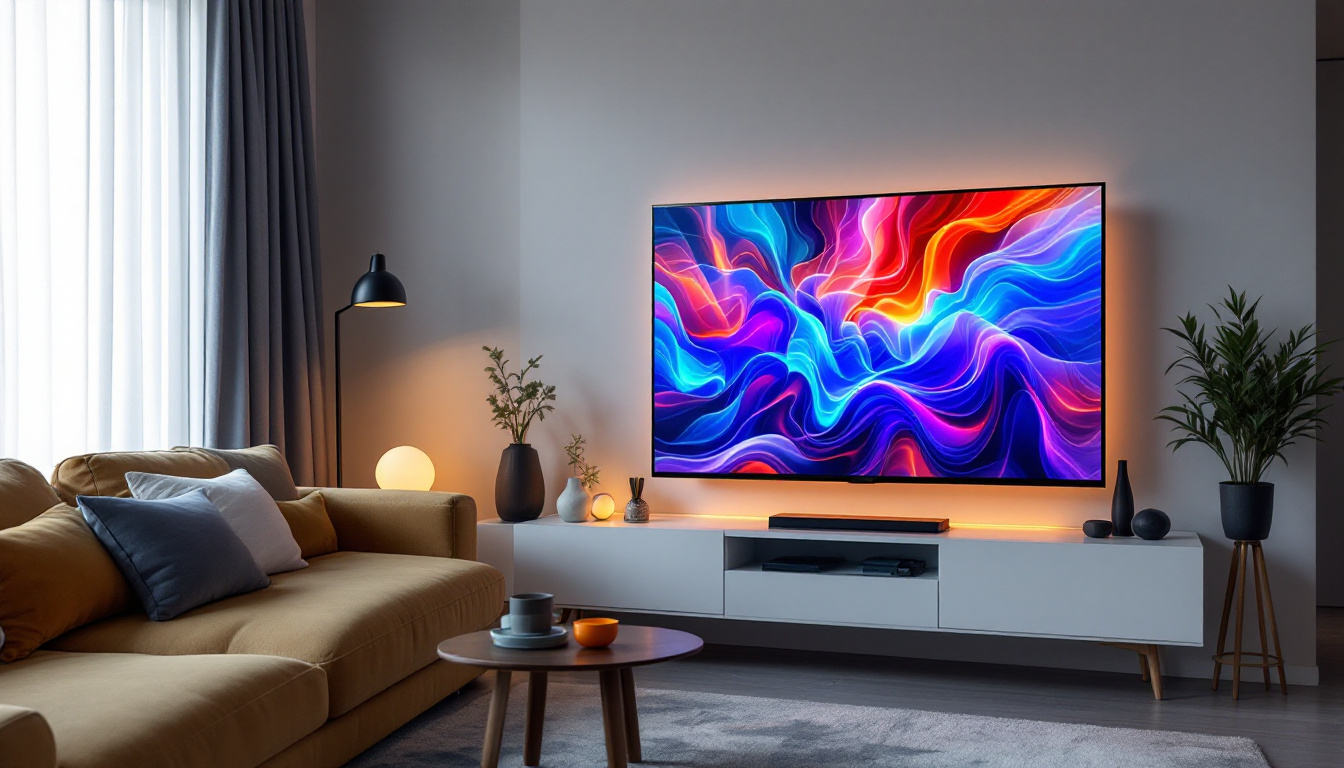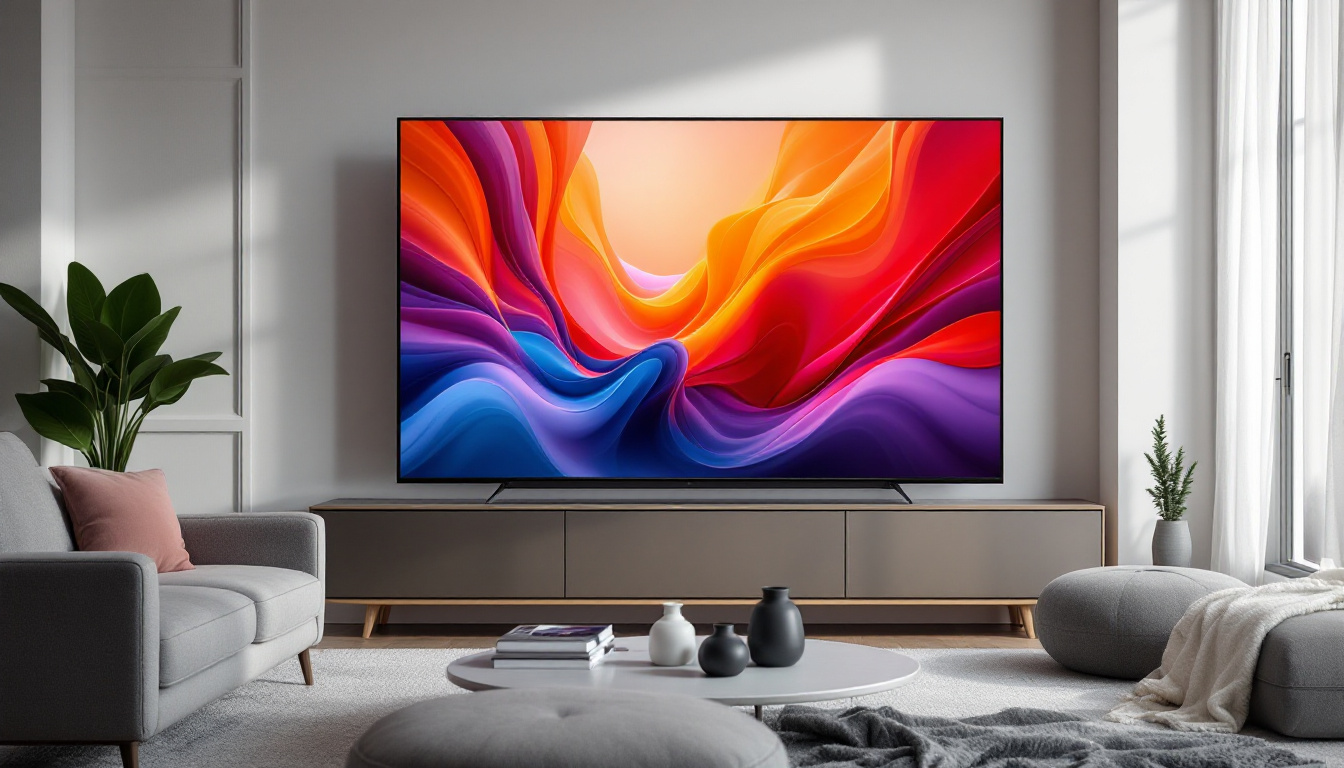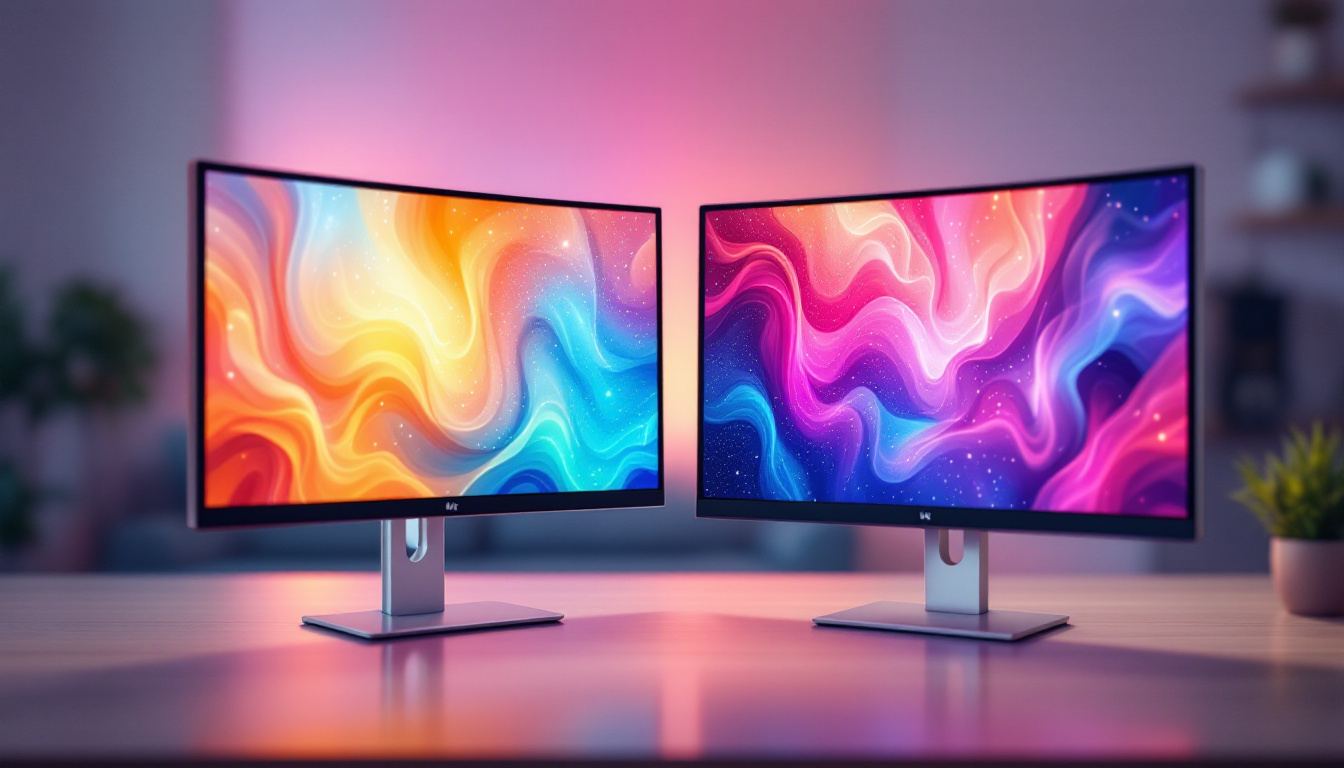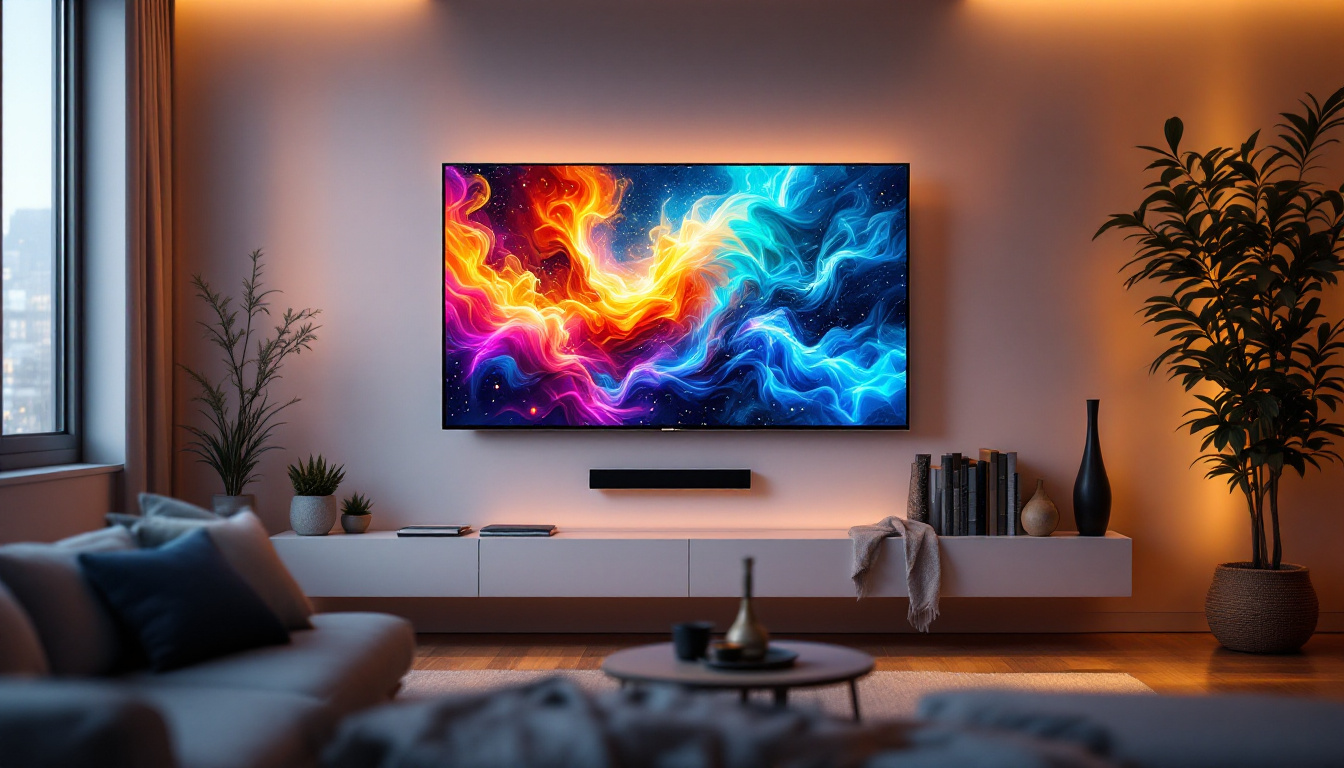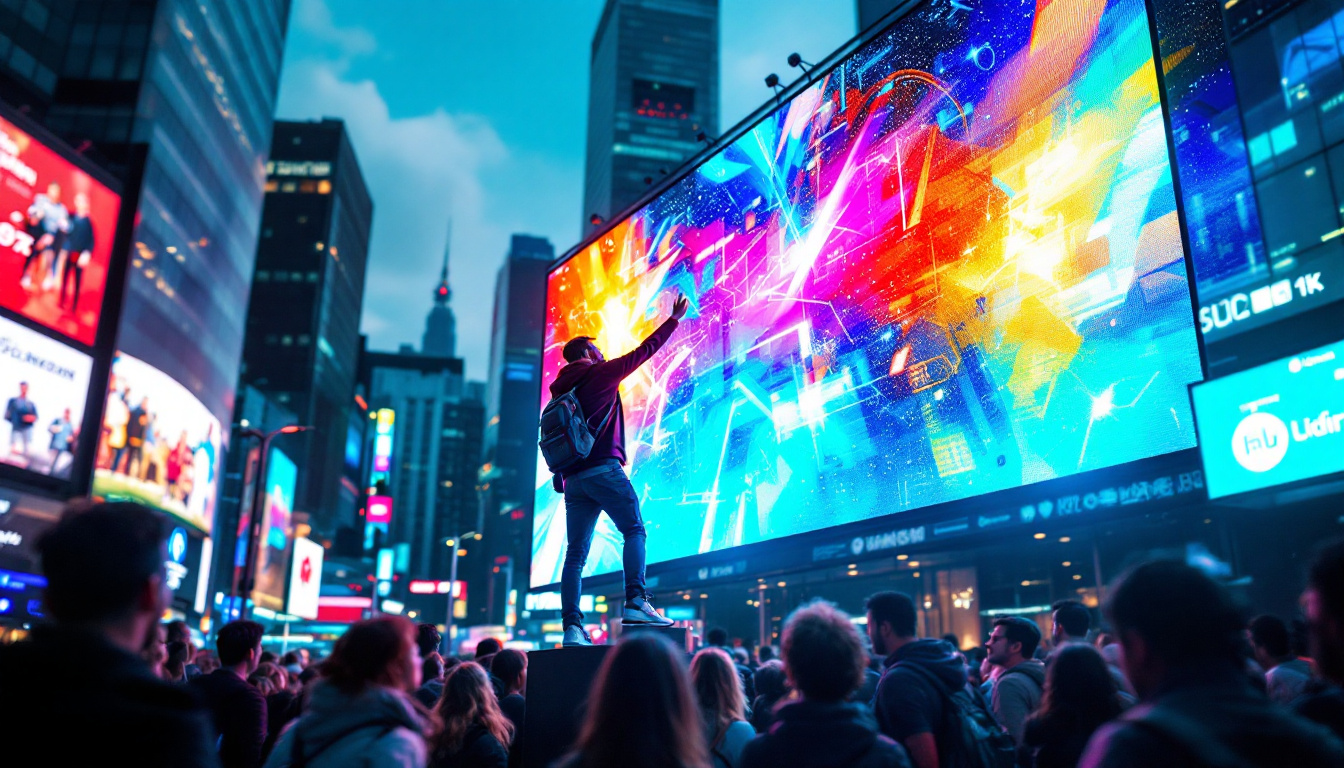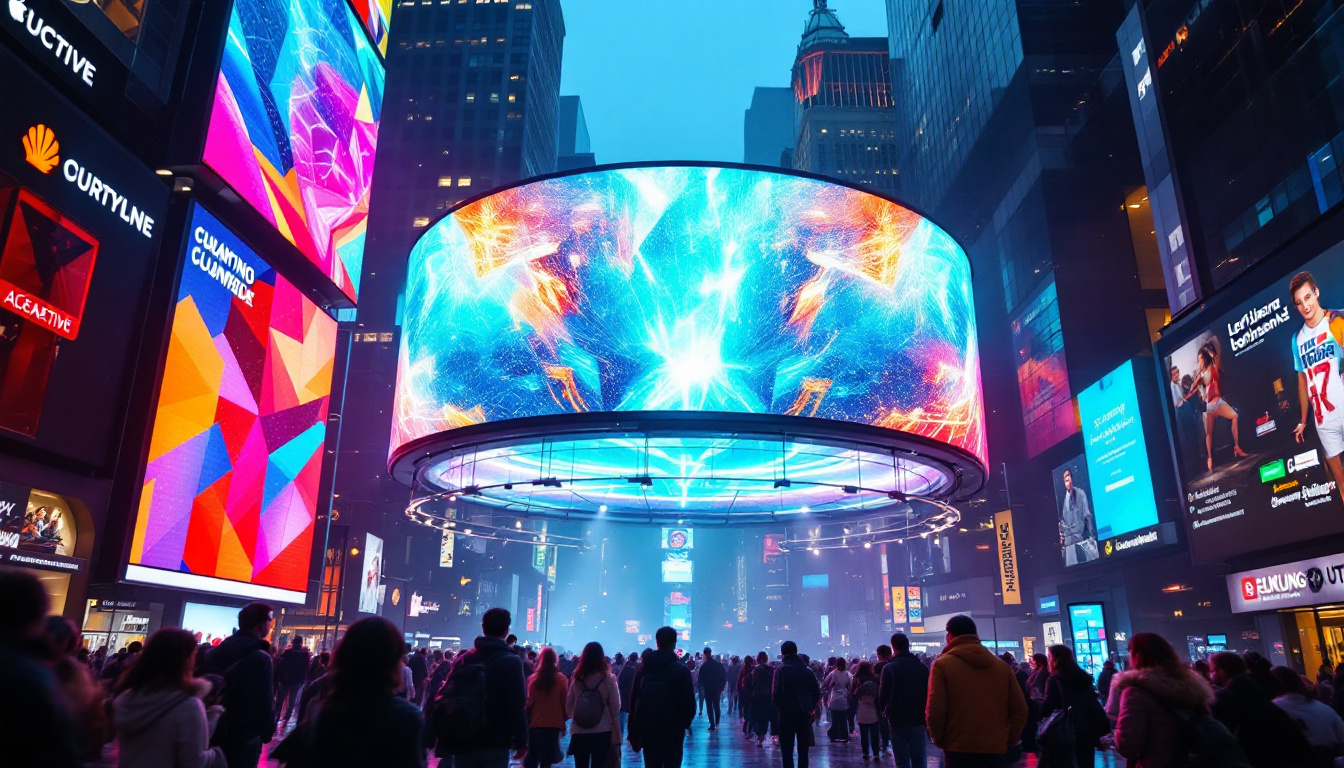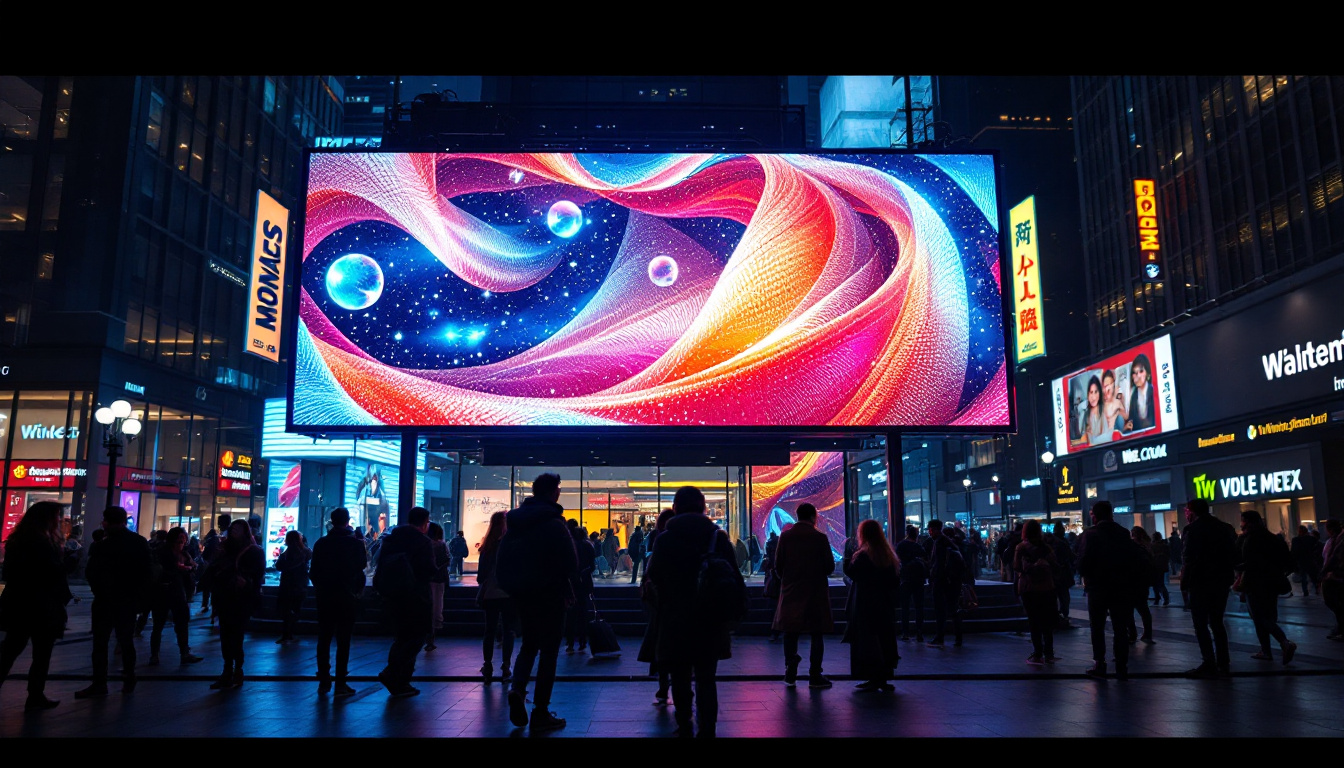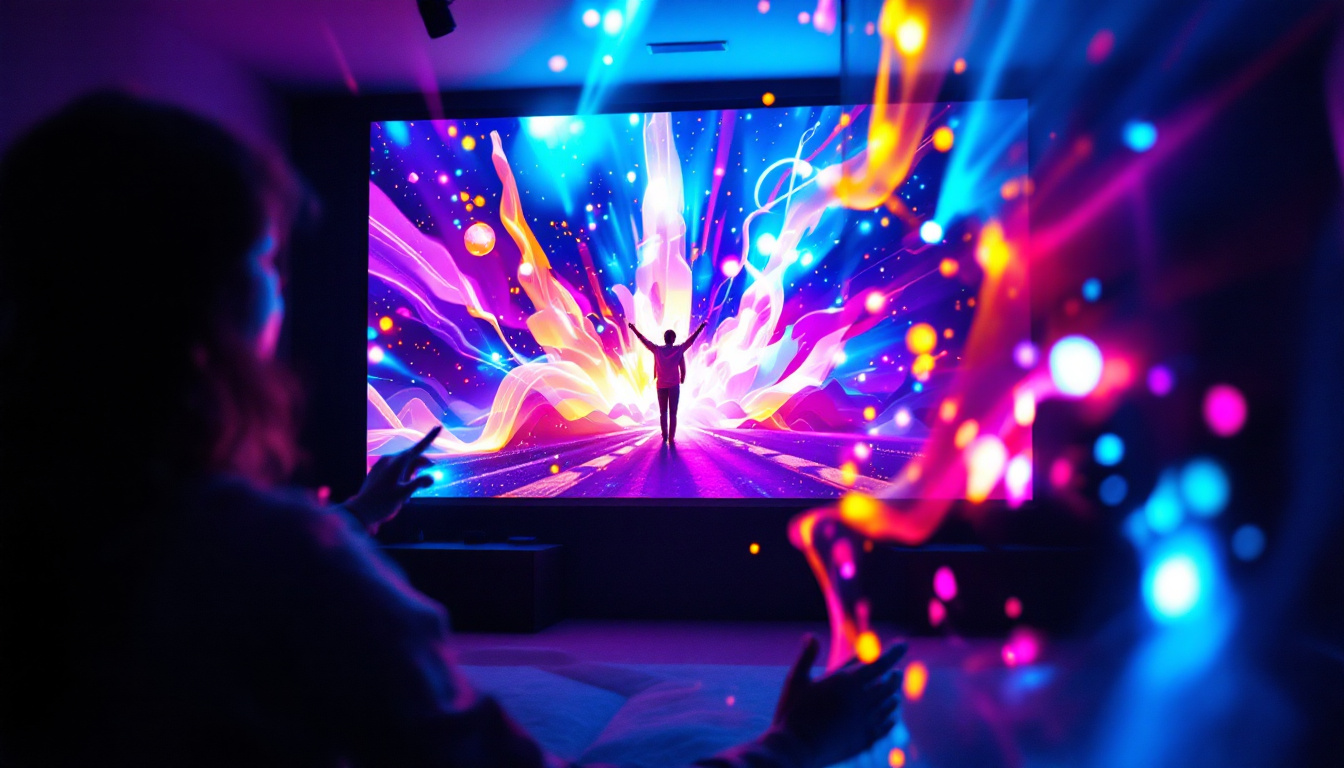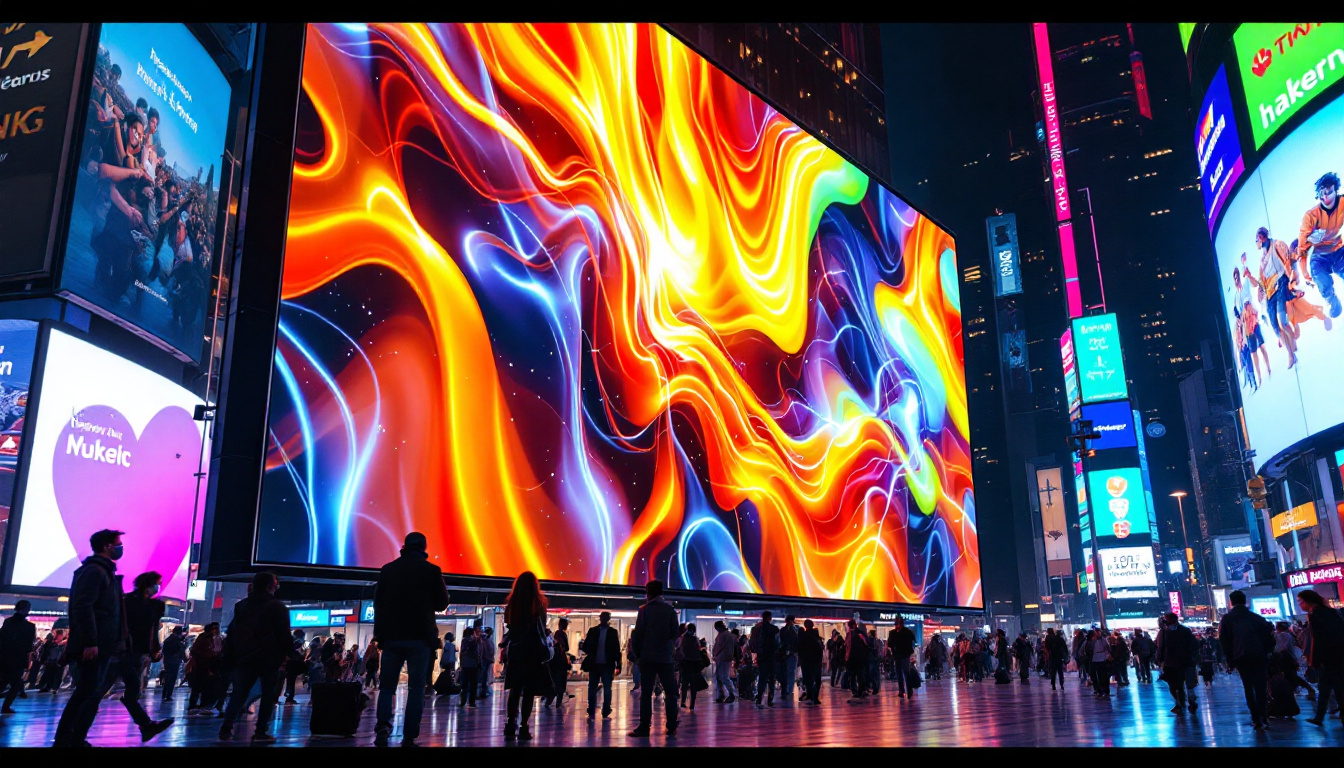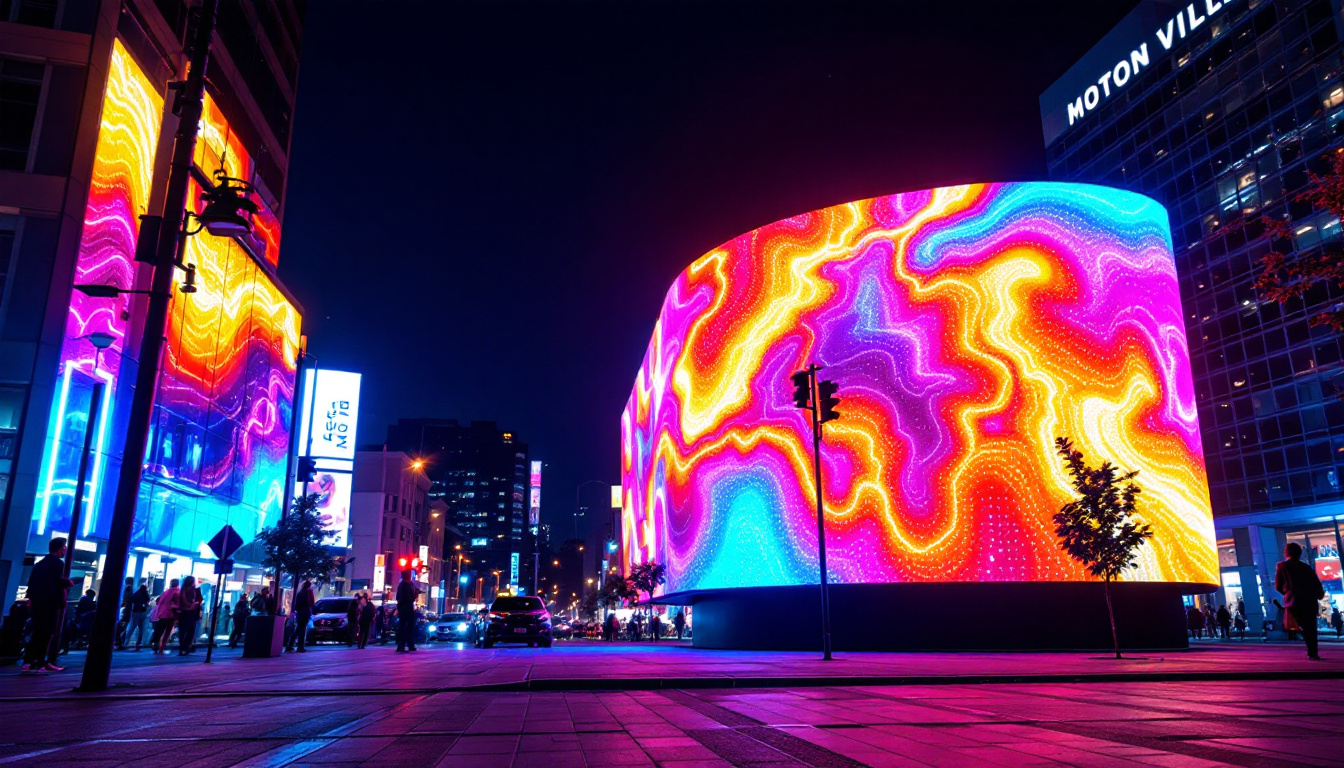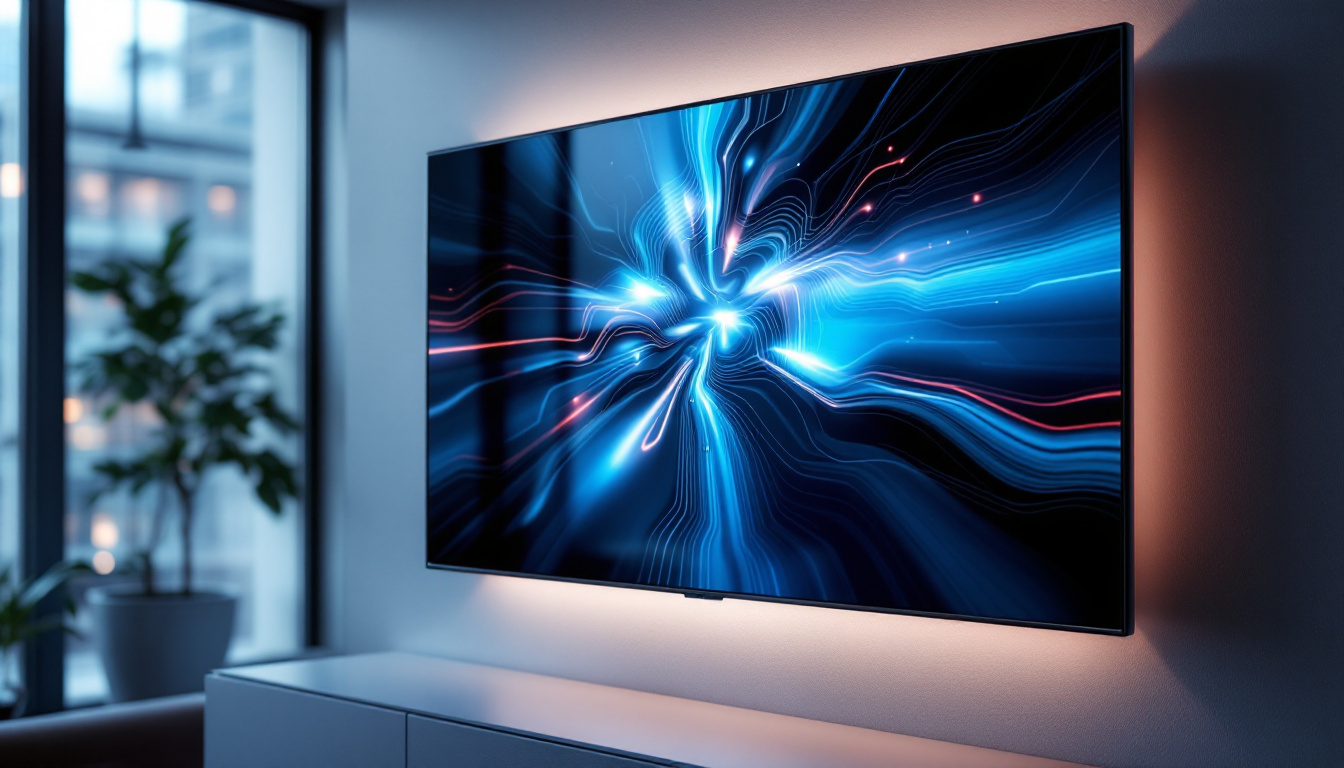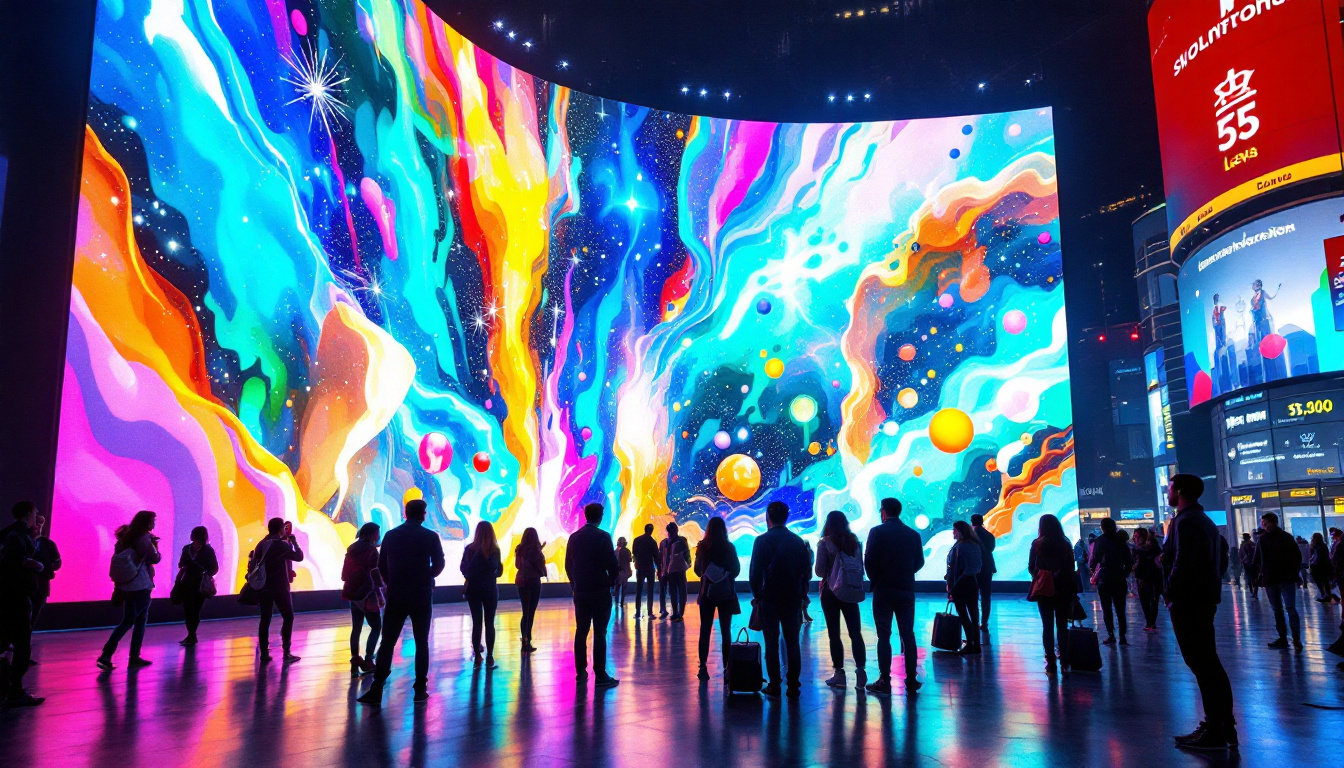In the realm of visual technology, the contrast ratio is a fundamental concept that significantly impacts the quality of images displayed on screens. Particularly in LED displays, understanding contrast ratio is crucial for both consumers and professionals alike. This article delves into the definition of contrast ratio, its importance, and how it affects the viewing experience on LED displays.
What is Contrast Ratio?
Contrast ratio is a measurement that compares the luminance of the brightest white to that of the darkest black that a display can produce. It is expressed as a ratio, such as 1000:1. In this example, the brightest white is 1000 times brighter than the darkest black. This ratio plays a vital role in determining the overall image quality and clarity of the display. A higher contrast ratio typically indicates a more vivid and engaging viewing experience, making it particularly important for applications such as gaming, graphic design, and video editing, where color accuracy and detail are paramount.
Understanding Luminance
Luminance refers to the amount of light emitted from a surface per unit area in a given direction. In the context of LED displays, it is essential to recognize that higher luminance levels contribute to a more vibrant and dynamic image. A display with a high contrast ratio can produce deeper blacks and brighter whites, enhancing the overall visual experience. Moreover, luminance is not only crucial for aesthetic appeal but also plays a significant role in reducing eye strain, especially during prolonged use. Displays that effectively balance luminance levels can provide a more comfortable viewing experience, making them preferable for users who spend long hours in front of screens.
Types of Contrast Ratios
There are two main types of contrast ratios: static and dynamic. Static contrast ratio measures the luminance of the brightest white to the darkest black under consistent lighting conditions. In contrast, dynamic contrast ratio evaluates the display’s ability to adjust brightness levels in real-time, often resulting in higher numerical values. However, dynamic ratios can sometimes be misleading as they may not reflect the actual performance of the display in standard viewing situations. Understanding the differences between these types is crucial for consumers, as it helps them make informed decisions when purchasing displays. For instance, a monitor marketed with a high dynamic contrast ratio may not necessarily provide a better viewing experience than one with a lower static contrast ratio, especially in environments with controlled lighting.
Importance of Contrast Ratio in LED Displays
The contrast ratio is a critical factor in determining the quality of an LED display. A higher contrast ratio generally leads to better image quality, making it essential for various applications, from home entertainment systems to professional displays in commercial settings.
Impact on Image Quality
Displays with a high contrast ratio can render images with greater depth and detail. This is particularly noticeable in dark scenes or images with subtle gradients. For instance, in movies or video games, a higher contrast ratio allows viewers to perceive details that might otherwise be lost in shadows. This enhanced image quality is vital for an immersive viewing experience. Furthermore, the ability to distinguish between different shades and tones can significantly affect the storytelling in visual media, creating a more engaging narrative. In environments such as art galleries or museums, where visual impact is crucial, high contrast ratios can elevate the presentation of artworks, allowing viewers to appreciate the nuances of texture and color that the artists intended.
Color Accuracy and Vibrancy
Contrast ratio also influences color accuracy. A display with a low contrast ratio may struggle to differentiate between similar colors, leading to a washed-out appearance. Conversely, a high contrast ratio allows for more vibrant colors and a broader color gamut, making images appear more lifelike and engaging. This is especially important for professionals in fields such as graphic design and photography, where accurate color representation is paramount. In addition, the ability to reproduce a wide range of colors can enhance the effectiveness of marketing materials and advertisements, as consumers are often drawn to visually striking images. The role of contrast ratio extends beyond mere aesthetics; it can also impact viewer retention and emotional response, making it a vital consideration for content creators aiming to capture and maintain audience attention.
How to Measure Contrast Ratio
Measuring contrast ratio can be done through several methods, often utilizing specialized equipment to ensure accuracy. Understanding the process can help consumers make informed decisions when purchasing LED displays. A good contrast ratio enhances the viewing experience by ensuring that colors appear vibrant and details are visible even in darker scenes, making it an essential factor for both casual viewers and professional users.
Using a Colorimeter
A colorimeter is a device that measures the color and luminance of a display. By taking readings of the brightest white and the darkest black, users can calculate the contrast ratio accurately. This method is commonly used by professionals who require precise data for calibration and testing. Colorimeters can also help in assessing color accuracy and uniformity across the screen, providing a comprehensive understanding of the display’s performance. For those who are serious about their visual experience, investing in a quality colorimeter can yield significant benefits, especially in fields such as graphic design, photography, and video editing.
Manufacturer Specifications
Most manufacturers provide contrast ratio specifications for their displays. However, it is crucial to approach these numbers with caution. Often, manufacturers may use dynamic contrast ratios, which can inflate the perceived performance of the display. Therefore, it is advisable to look for reviews and independent tests that provide real-world performance insights. Additionally, understanding the context in which these specifications are provided is essential; for instance, a higher contrast ratio might not always translate to a better viewing experience if the display suffers from poor color accuracy or inconsistent brightness levels. Consumers should also consider the ambient lighting conditions in which the display will be used, as this can significantly affect perceived contrast and overall image quality.
Factors Affecting Contrast Ratio
Several factors can influence the contrast ratio of an LED display. Understanding these factors can help consumers choose the right display for their needs.
Ambient Lighting Conditions
The environment in which a display is used can significantly affect its perceived contrast ratio. In bright rooms, reflections and glare can wash out colors and reduce the effectiveness of the contrast ratio. Conversely, in darker environments, displays can perform better, showcasing their full contrast potential. It is essential to consider the intended use environment when selecting an LED display. For example, a home theater setup may benefit from a display that excels in low light, while a bright office setting may require a model with anti-glare technology to maintain visibility and color accuracy.
Moreover, the use of curtains, blinds, or specialized lighting can also play a crucial role in optimizing the viewing experience. By controlling ambient light, users can enhance the display’s performance, ensuring that the contrast ratio is not compromised. This is particularly important for tasks that require precise color differentiation, such as graphic design or video editing, where the subtleties of contrast can make a significant difference in the final output.
Display Technology
Different display technologies exhibit varying contrast ratios. For instance, OLED displays typically offer superior contrast ratios compared to traditional LED displays due to their ability to turn off individual pixels completely, resulting in true blacks. Understanding the technology behind a display can help consumers make informed choices based on their visual preferences. Additionally, advancements in quantum dot technology have led to the development of QLED displays, which also provide enhanced brightness and color accuracy, making them a strong contender for those seeking high contrast ratios.
Furthermore, the calibration of a display can also impact its contrast ratio. Many modern displays come with factory presets that may not be optimized for every viewing scenario. Users who take the time to calibrate their displays, adjusting settings such as brightness, contrast, and color balance, can often achieve a more favorable contrast ratio tailored to their specific environment and viewing habits. This level of customization can be especially beneficial for enthusiasts who demand the highest quality in their visual experience, whether for gaming, watching movies, or professional work.
Applications of Contrast Ratio in LED Displays
The significance of contrast ratio extends beyond mere aesthetics; it has practical applications across various industries. Here are some key areas where contrast ratio plays a vital role.
Home Entertainment
For home theater enthusiasts, a high contrast ratio is essential for an immersive viewing experience. Whether watching movies or playing video games, the ability to see fine details in dark scenes enhances the overall enjoyment. Many consumers prioritize contrast ratio when selecting televisions or projectors for their home setups.
Professional Use
In professional environments, such as graphic design, video editing, and photography, accurate color representation and detail visibility are crucial. Displays with high contrast ratios allow professionals to work with greater precision, ensuring that their final products meet industry standards. This is particularly important when color grading or retouching images.
Choosing the Right Contrast Ratio for Your Needs
When selecting an LED display, understanding the appropriate contrast ratio for specific needs is essential. Different applications may require different levels of contrast.
For General Use
For everyday use, such as browsing the internet or watching videos, a contrast ratio of around 1000:1 is typically sufficient. This level provides a good balance of image quality without being overly demanding on the display technology.
For Gaming and Movies
Gamers and movie enthusiasts may benefit from displays with higher contrast ratios, ideally above 3000:1. This ensures that dark scenes are rendered with depth and clarity, enhancing the overall experience. Additionally, features like HDR (High Dynamic Range) can further improve contrast and color accuracy.
Conclusion
Understanding contrast ratio is vital for anyone looking to purchase or utilize LED displays effectively. It directly impacts image quality, color accuracy, and overall viewing experience. By considering factors such as ambient lighting, display technology, and specific application needs, consumers can make informed decisions that enhance their visual experiences.
As technology continues to evolve, the importance of contrast ratio will remain a cornerstone of display performance. Whether for home entertainment, professional applications, or casual use, a well-chosen display with an appropriate contrast ratio can significantly enhance the enjoyment and effectiveness of visual content.
Enhance Your Visual Experience with LumenMatrix
Ready to take your viewing experience to the next level? Discover the unparalleled clarity and vibrancy of LumenMatrix’s advanced LED display solutions. Whether you’re looking to captivate your audience with an Indoor LED Wall Display, make a statement with an Outdoor LED Wall Display, or innovate with Custom LED Display options, LumenMatrix has the technology to bring your vision to life. Embrace the future of visual communication and check out LumenMatrix LED Display Solutions today to see how we can transform your space with our cutting-edge displays.


